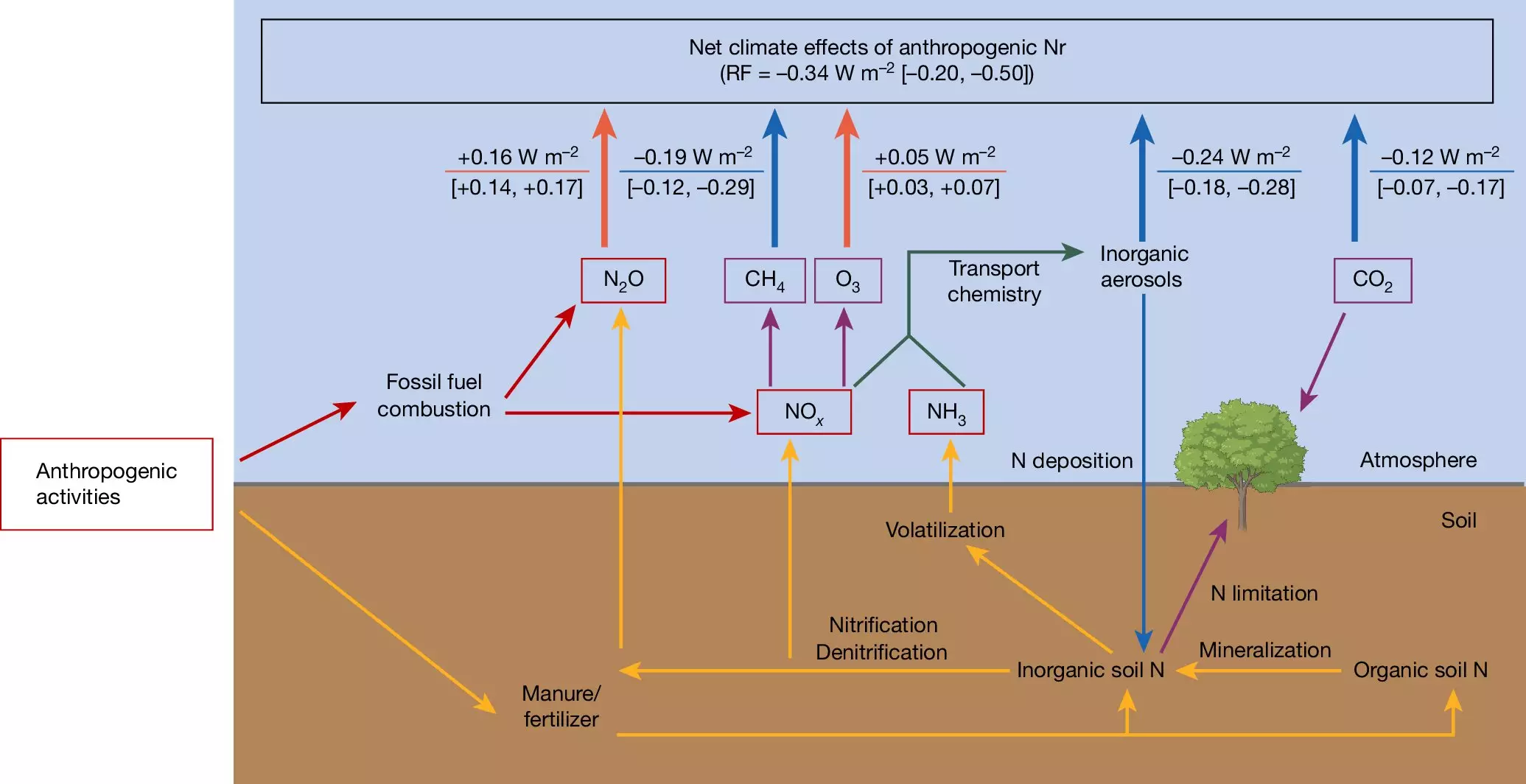Understanding the complex relationship between nitrogen compounds and the environment reveals an intricate tapestry of both benefits and detriments. At the forefront of agricultural practices, nitrogen fertilizers have been known for their critical role in enhancing plant growth. However, as recent research from the Max Planck Institute for Biogeochemistry highlights, these same compounds also come with significant environmental costs, including soil degradation, water pollution, and reduced biodiversity. This contradiction raises important questions: Can we attain agricultural productivity while mitigating ecological harm? Or is the promise of abundant yields masking severe environmental consequences?
Nitrogen, a fundamental element constituting about 78% of the atmosphere, presents a duality in its various forms. While elemental nitrogen is neutral to the climate, reactive nitrogen—including nitrogen oxides and nitrous oxide—plays complex roles in climate dynamics. This has inevitably led to debates among scientists about the net impact of human-induced nitrogen compounds on climate change. With some forms acting as greenhouse gases and others having cooling effects, the relationship is anything but straightforward.
Nitrous Oxide and its Detrimental Legacy
One particularly noteworthy form of reactive nitrogen is nitrous oxide (N₂O), known colloquially as laughing gas. Remarkably, this gas is nearly 300 times more effective at trapping heat in the atmosphere than carbon dioxide (CO₂) and has a much longer life span, making it a potent greenhouse gas. Its primary sources are agricultural—stemming from nitrogen-rich soils and the combustion of fossil fuels. This poses a critical dilemma: while we aim to enhance agricultural efficiency, we inadvertently contribute to one of the most potent forces of climate change.
The alarming reality is that increasing nitrous oxide emissions inadvertently worsen the climate crisis despite the fact that the very fertilizers boosting crop yields are also contributing to atmospheric warming. Essentially, the short-term gains in agricultural output come with long-term costs for our planet’s climate stability.
The Cooling Effects of Nitrogen Oxides
Contrary to the warming effects of nitrous oxide, nitrogen oxides (NOx) derived predominantly from fossil fuel combustion demonstrate a unique cooling effect. These compounds create fine particulate matter in the atmosphere, effectively blocking sunlight from reaching the Earth’s surface. Interestingly, this temporary cooling may lead to a misguided perception that increasing nitrogen emissions could serve as a climate solution.
Adding another layer of complexity, nitrogen oxides help break down atmospheric methane—another potent greenhouse gas—thereby contributing to additional cooling. However, their role in fostering tropospheric ozone formation presents a paradox: tropospheric ozone is a bad actor, acting as a potent greenhouse gas that exacerbates anthropogenic warming.
This inconsistency is disconcerting; nitrogen may provide some cooling effects, yet it is also intertwined with factors that drive climate change. As researchers like Sönke Zaehle point out, a balanced understanding of these effects is essential if we are to navigate the complexities of our atmospheric realities.
The Balance Between Agricultural Productivity and Ecological Health
While the research emphasizes that human-induced reactive nitrogen compounds provide a net cooling effect of -0.34 watts per square meter, the context is critical. This minor cooling is dwarfed by the more substantial warming associated with greenhouse gases emitted from fossil fuels, showcasing a disturbing trend: as we strive for agricultural productivity, we find ourselves racing toward greater environmental collapse.
Fortunately, not all hope is lost. The call for improved agricultural practices that facilitate the efficient use of nitrogen fertilizers is more urgent than ever. Sustainable practices can minimize the emissions of nitrous oxide and bring about healthier ecosystems that benefit both human populations and biodiversity.
Agriculture must evolve, incorporating methods that acknowledge both the productive and destructive potential of nitrogen. Whether through precision agriculture or alternative fertilization techniques, innovation is required to enhance food security while protecting our climate.
Each decision in nitrogen management indeed impacts health, ecosystems, and, by extension, climate dynamics. As such, urgent actions are necessary to revise our approach, ensuring that reductions in reactive nitrogen emissions go hand in hand with aggressive strategies to cut greenhouse gas emissions. The change we seek must be holistic—targeting the underlying factors rather than simply addressing the symptoms of climate change.
The conversation surrounding nitrogen must not simplify its ecological duality. Recognizing the nuanced interactions of nitrogen compounds calls for a more sophisticated and responsible strategy in both agriculture and climate policy—one that embraces complexity while driving towards a sustainable future.

